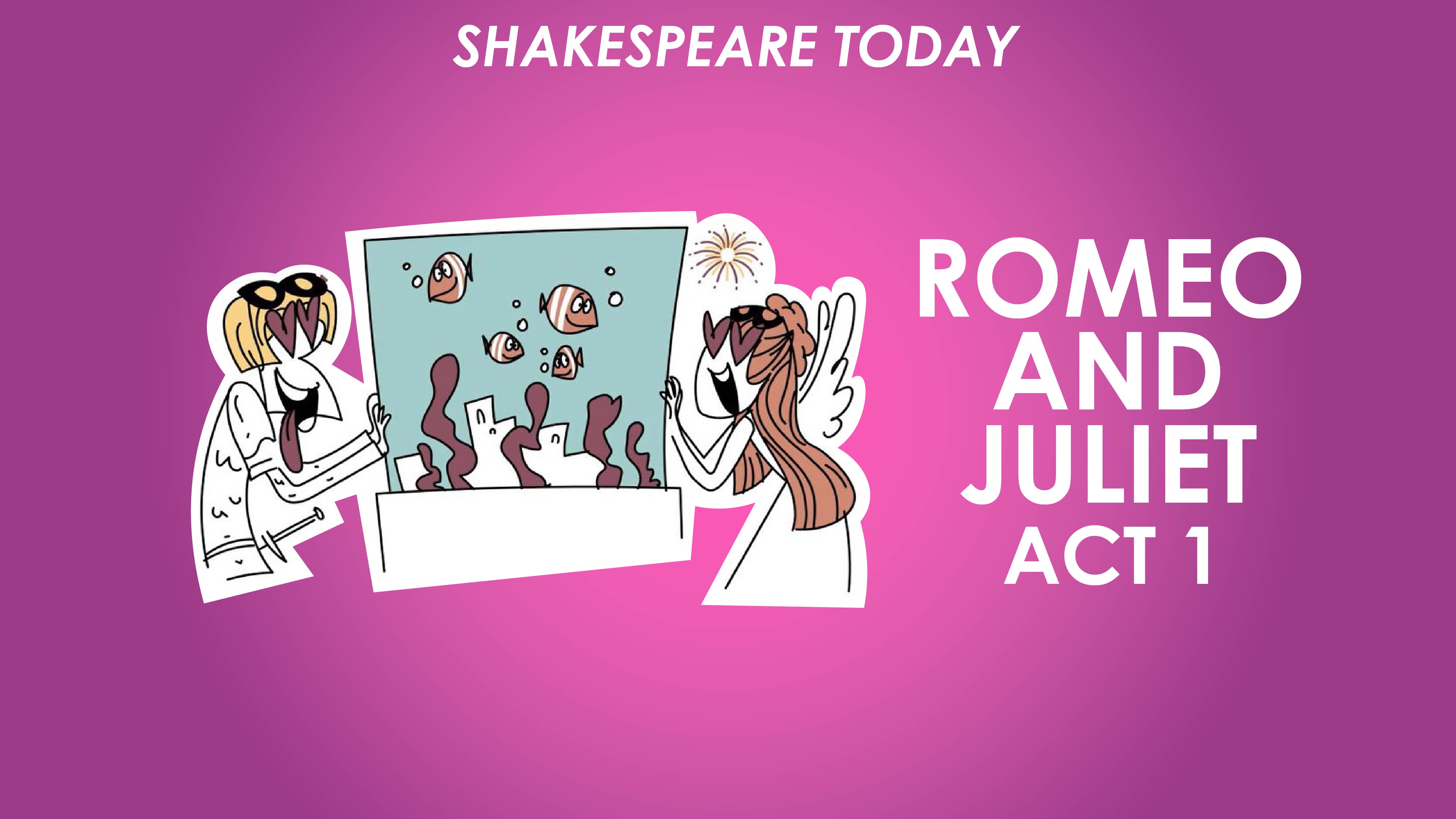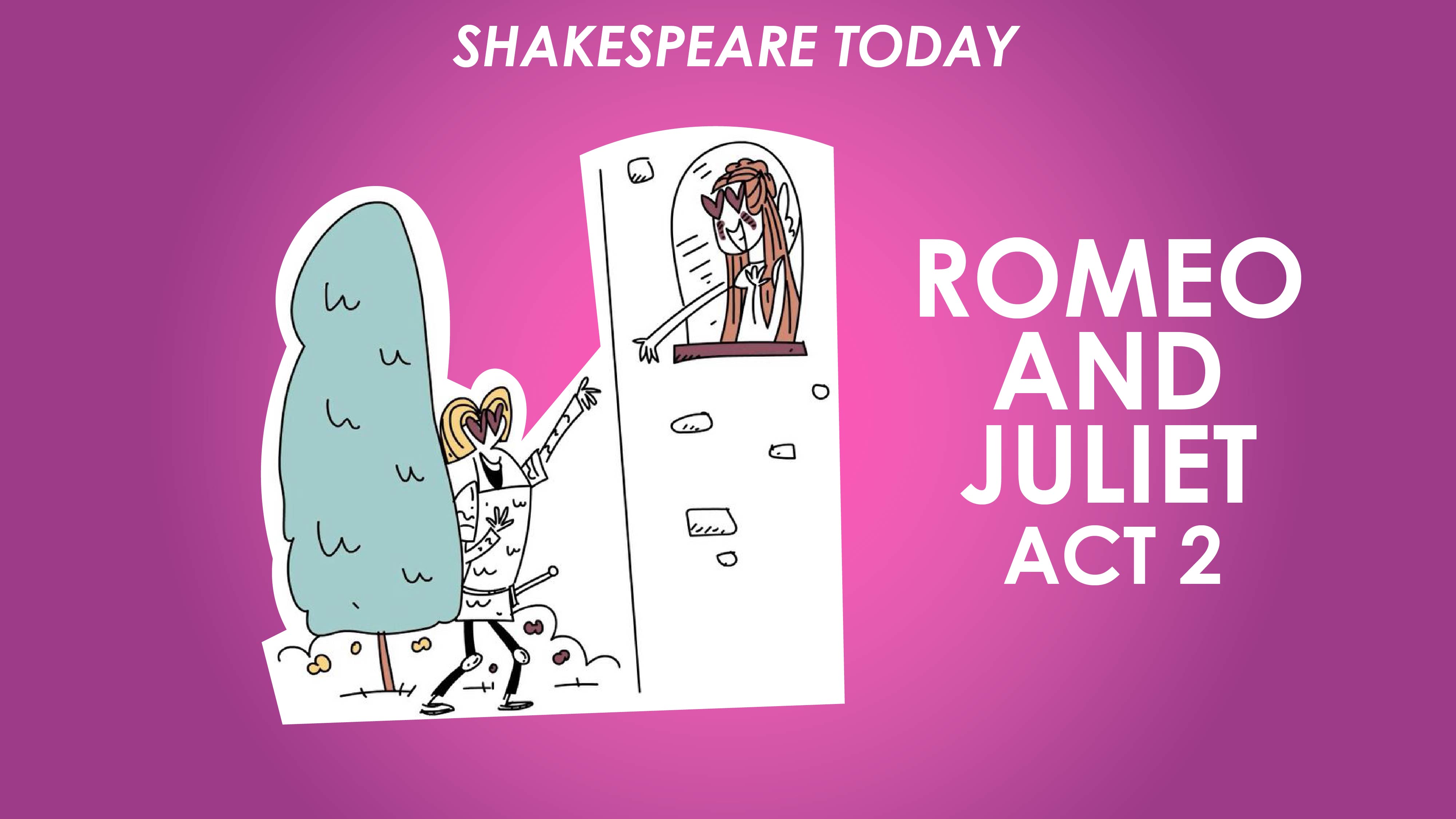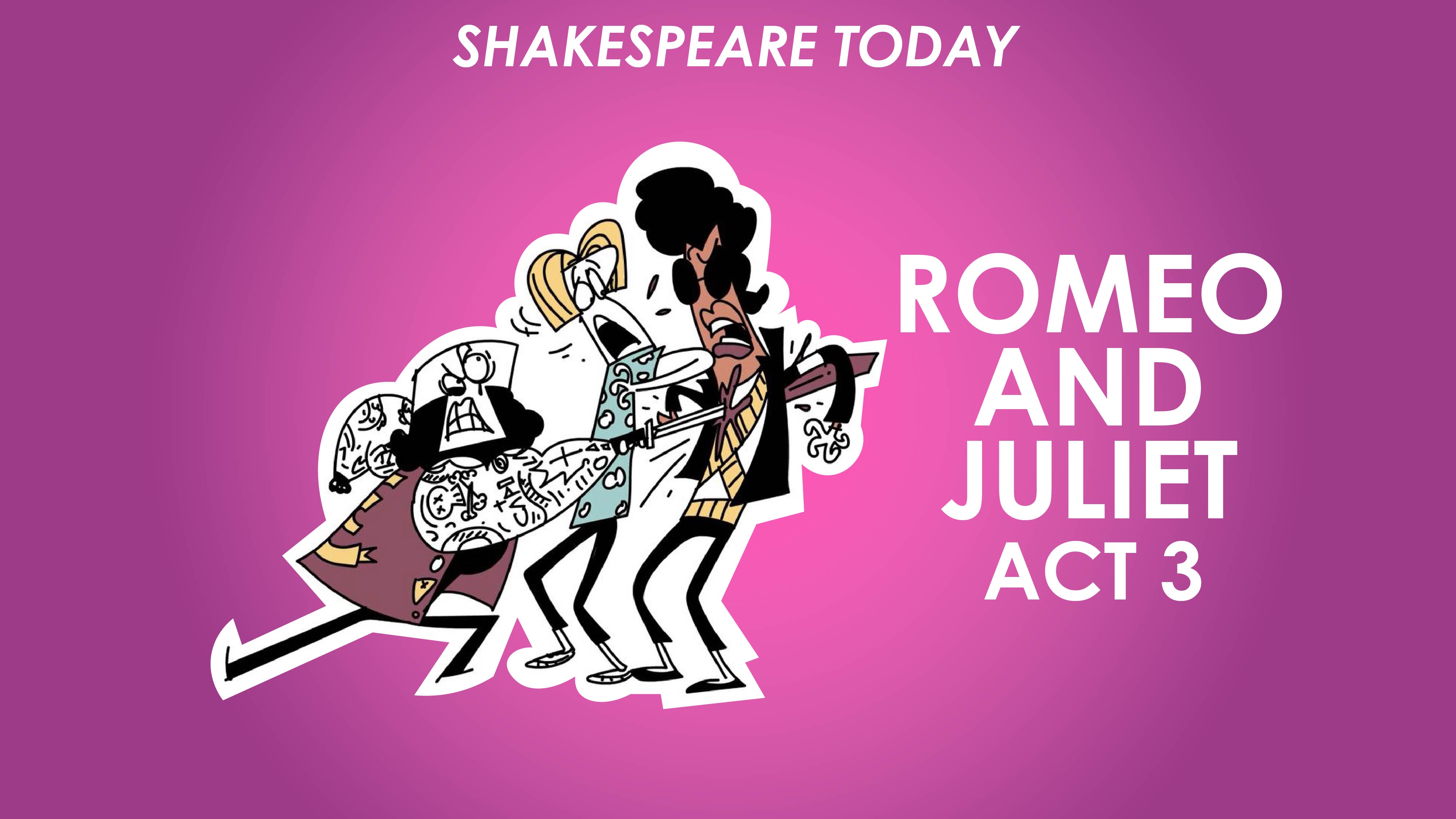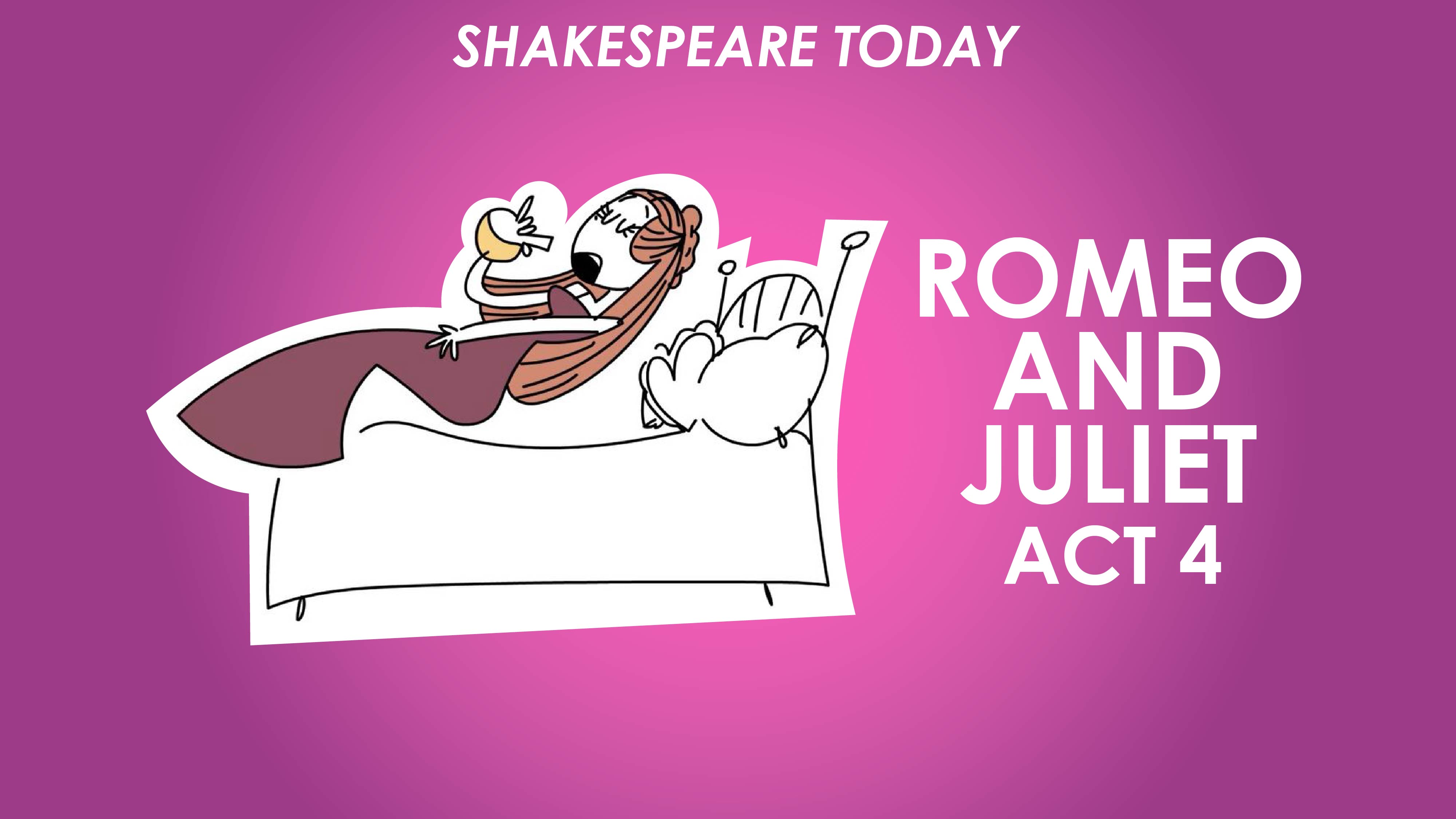Romeo and Juliet Act 1 Summary - Shakespeare Today Series
 3:11
3:11
Guide for Students
If you’re in high school, you’re going to study Shakespeare at some point. And we hear you: Shakespeare can be hard. Sometimes, it seems like his plays are written in a foreign language. It doesn’t help that his stories and characters seem so unfamiliar today - Romeo and Juliet never went to high school or binged on a tv series.
But what if we told you that Shakespeare does not have to be boring or overwhelming? Our Shakespeare Today Series is created by a team of experienced educators who understand your struggle. We want to help you to understand Shakespeare’s plays and ace your assessments. Our videos are full of clear explanations and in-depth analysis – and don’t forget the fascinating animations and memorable narration! They’re just one click away!
Follow these tips to get the most out of our videos:
1. Before you start studying a play at school.
Why not watch our lessons in the holidays or even the night before an English class? Ask your teacher which play you’ll be covering next term. Get a taste of the play by watching our plot summaries and context lessons!
We recommend that you jot down notes as you watch the videos. You can even create a timeline of events in the play or a mind map of contextual influences. These will help you to navigate the text at school.
Once you get an idea of what happens in the play, feel free to watch our lessons on major themes and quote analysis. Now, you’ll be one step ahead of your class and can focus on developing your analytical skills and preparing for assessments.
2. While your class is studying a play.
So, you’re starting to understand the play. But what are the big ideas? What is Shakespeare really writing about?
Watch our lessons to find out! We’ve created exciting videos that cover five major themes in each play. Head over to these videos when your teacher starts handing out homework and assessment notifications. We want to enhance your understanding of Shakespeare’s views on love, justice and other powerful ideas.
Pick a video and watch it as many times as you like. Feel free to replay confusing sections and skip parts that already make sense. Note down any quotes and analysis that might be useful for your school work. As a rule, we explain every technique that we use, so you won’t be in the dark about ‘juxtaposition’ and ‘dramatic irony’ ever again.
We want you to explore the play in depth, so make sure to watch our videos on a regular basis! Take your time to cover the themes – watch one or two videos a week as you cover the play in class. This way, you’ll deepen your understanding of the play and start to memorise quotes bit by bit.
3. When preparing for an assessment.
Understanding a play’s plot and themes is only the first step to acing your assessments. You’ll also need to analyse quotes from the play to support your arguments. Don’t worry, we’ll help you to figure out which techniques Shakespeare is using and the effect of each technique.
In our theme videos, we introduce a variety of quotes and identify techniques before analysing them. We always reference which act and scene a quote comes from, so you can go back to the play and find the quote. Easy!
Once you finish our theme videos, you can head over to our quotes analysis videos. We’ll show you how to analyse all the key quotes in the play. Soon enough, you’ll be identifying techniques and explaining them on your own! Watch these videos on you own or with friends in a group revision session. They’ll love our videos, too!
Guide for Educators
Teaching Shakespeare is hard. It can be frustrating when your students do not seem to appreciate Shakespeare’s poignant plays. Maybe students in the 21st century just find it hard to relate to King Lear and Hamlet. But what if this could change? At Schooling Online, we want to bring the Bard to life.
Our videos are filled with captivating narration and jaunty animations, along with high-quality analysis and in-depth explanations. We explore the plot, context, themes and key quotes from a range of Shakespearean comedies and tragedies. Bring our videos into the classroom and move beyond the traditional blackboard learning!
Follow these tips to get the most out of our videos:
1. Integrate our videos into your school’s English curriculum.
The NESA English K-10 syllabus calls for students to study dramas from Year 7 onwards, with Shakespearean dramas becoming mandatory in Year 9. That’s why our videos cover Shakespeare’s most important plays, covering a range of comedies and tragedies. Our lessons also cater to Year 11 and 12 students studying Shakespeare’s plays in the English Studies, Standard, Advanced and Extension courses.
We recommend that you integrate our videos into your weekly, monthly and yearly teaching plans. Our videos connect students with Shakespeare’s contextual influences, while deepening their understanding of textual forms and features. Sign up your school with Schooling Online and set lessons for students to watch in class or at home.
2. Introducing students to a play.
You can encourage your students to engage personally with Shakespeare’s plays by showing our videos in class. For each play, we have one lesson dedicated to an overall plot summary and additional videos exploring what happens in each act. These introductory videos make complex plays, like ‘Othello’ and Merchant of Venice’, accessible and easy to follow. We want students to understand the story and character arcs before they continue to appreciate the themes and language.
After watching the plot and act summaries, we encourage you to play our context videos to develop students’ contextual knowledge. We know that modern students aren’t experts on Shakespeare’s Elizabethan and classical influences. That’s where we come in!
Of course, our videos give you full flexibility! You can play our plot and context videos to pique students’ interest, while developing their foundational understanding of the play. View our videos together after reading an act in class. Assign a lesson for students to view at home to consolidate their understanding of the play. The possibilities are endless when our videos are at your fingertips!
Feel free to use our videos as resource to spark discussion or engage students in interactive class activities. Students may:
- create character profiles for each main character
- discuss the differences and similarities between Shakespeare’s time and the 21st century
- discuss how Shakespeare’s audience would have responded to characters in the play or key events
3. Helping students to critically analyse a play.
At Schooling Online, we know how challenging critical analysis can be for high school students. For each play, we have created exciting videos on five major themes and important quotes to ease students into understanding and applying their knowledge of language forms and features. These videos model how students might interpret and analyse the play. We want students to confidently support their arguments with textual evidence.
Turn your classroom into an interactive environment by watching each video in short segments. Pause the video at the beginning or end of each key section and open a discussion with your class. Ask students the following questions to actively engage them in the learning process:
- Do you agree with that argument? Why? Why not?
- How would you explain that quote in your own words?
- What does this quote reveal about the characters and/or their relationships?
Feel free to use our videos as resources for the following sample activities. Students may:
- hold a classroom debate ‘for’ and ‘against’ a particular interpretation of a theme. Eg. Does Shakespeare challenge or reinforce gender stereotypes in Macbeth?
- create a mind-map of key quotes for a major theme.
- write a paragraph or essay response based on a major theme.
4. Use our videos for exam preparation.
Are your students scared of memorising key quotes or composing thesis statements? Well, there’s only one way to overcome that fear – be prepared! Play our videos when revising over content in class. You may also assign videos for students to review at home in preparation for an assessment.
Our videos can provide a basis for the following revision activities. Students may:
- create a visual character arc for the protagonist, annotated with quotes and analysis
- create notes for a major character or theme, incorporating context and textual evidence
- discuss how to approach an assessment task, such as how to structure an essay response
- compile further quotes and analysis for a major character or theme
Romeo and Juliet Act 1 Summary
Welcome to Verona! A beautiful city, marred by the ancient feud between the Montague and Capulet families. Some Montagues, including the young Romeo, are planning to sneak into a Capulet party. That evening, Romeo Montague and Juliet Capulet meet for the first time...
Watch our summary of Romeo and Juliet: Act I to find out what happens.


















Share